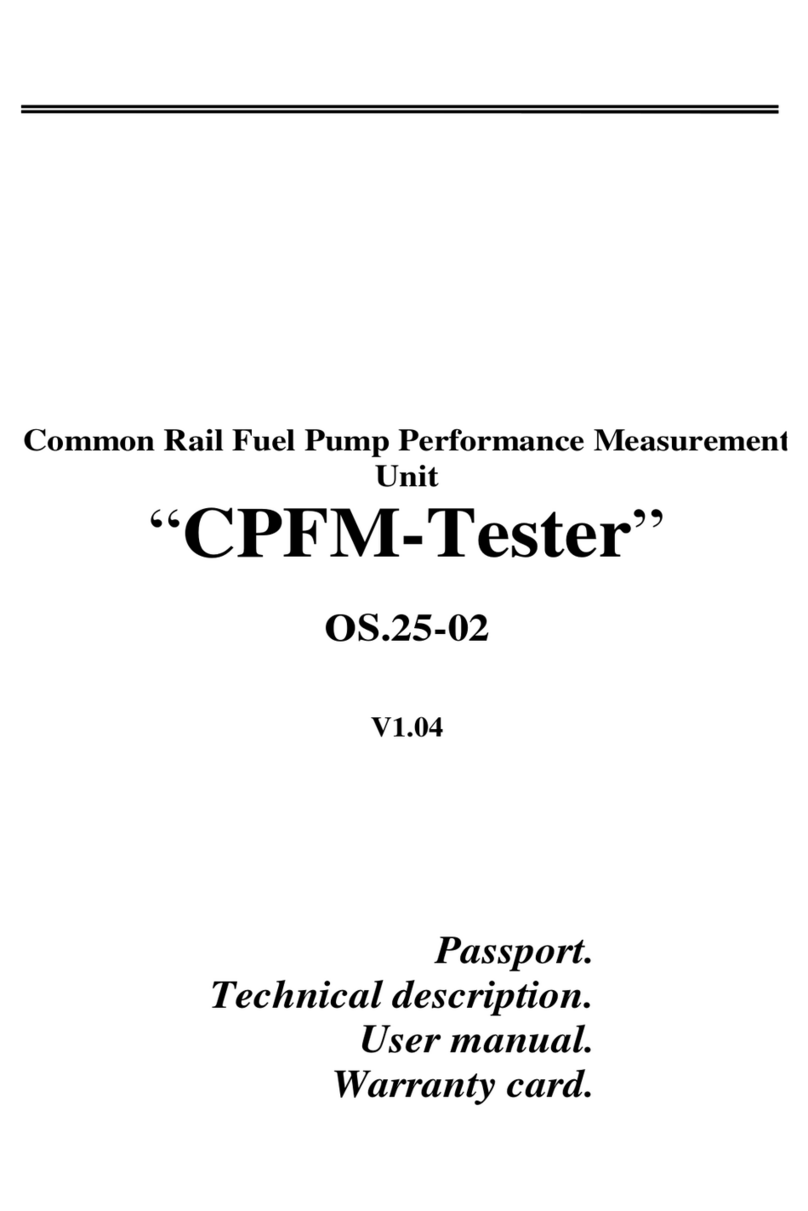
"Diesel tester .CR-IP.1-4I" - Passport. Technical description.
8.
Preparing for work
Before operating the Diesel tester CR-IP.1-4I, please read the operating
instructions carefully.
When preparing the unit for operation, carry out the following steps:
Perform an external inspection of the device and connecting cables. External
inspection of the device and connecting cables is carried out with power supply
disconnected and consists in detection of mechanical damage of the device and
connecting cables.
9.
Working with the device
The "Diesel tester CR-IP.1-4I" device enables testing of electrically controlled
Common Rail system diesel injectors by means of controlling the regulating valve with
user-defined injector control signals and fuel pressure.
The device is controlled by means of software (hereinafter referred to as software)
on a personal computer (hereinafter referred to as PC).
To ensure continuous and trouble-free operation of the pressure regulator,
the maximum PWM value should be in the region of 35-40% in all operating modes
of the hydraulic system. This is achieved individually by selecting the ratio of pump
speed, pressure regulator and pump with its maximum volumetric capacity.
Ensuring security
In order to ensure the safety of the operating personnel, we strongly recommend
the use of passive protection elements in the system (various protective covers or shields
covering rotating parts and high-pressure lines). A convenient technical solution is to
make the enclosure, covering the rail and nozzles, from transparent plastic. End switches
must be installed on the opening elements.
The device has an additional input "PROT" (from English - protection). Using
this input, the device determines whether the safety guards are closed or not. The device
wiring diagram is very simple and does not require any special skills for installation (see
appendix 5).
When working with injectors, the pressure is controlled only by the standard
high-pressure regulator mounted on the rail or on the pump of the CP1 system.
When using a CP3 system pump, a high pressure regulator rail must be
installed from the CP1 system.
Diesel tester CR-IP.1-4I" does not control the low pressure regulator of
pump CP3 in automatic mode.




























